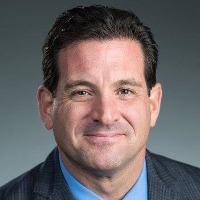As a CPA practice owner, you’ve devoted years to building your business. But have you considered how that business will fund your retirement? To exit on your terms with a comfortable retirement, you need a plan to turn your illiquid business into reliable retirement income. Your practice is likely one of your largest assets, yet it’s an illiquid asset – not easily or quickly converted to cash. Without planning, that value could remain “stuck” when you need it most.
In this article, we’ll discuss why knowing your practice’s value is essential, outline strategies from small tweaks (like paying yourself dividends) to big moves (like selling the firm) that can convert your business value into income, and cover transition planning and tools to bridge the gap between your pre-liquid wealth (the business) and liquid wealth (cash or investments). Our aim is to empower you, in a friendly and professional way, to start taking action for your future.
Your CPA Practice: A Major Illiquid Asset
For most CPA firm owners, the practice itself represents a significant portion of their net worth. However, unlike a stock portfolio or 401(k), a business is illiquid wealth – its value is on paper until you convert it to cash. Trillions of dollars of owner wealth are locked up in private businesses across America, and your firm is likely a part of that. Managing the wealth tied up in your practice is, therefore, a big deal for your financial future.
Yet many owners focus on their liquid investments while giving little attention to the wealth inside their business. Liquid assets are carefully managed, but business wealth often isn’t managed with the same rigor. It’s time to change that mindset. Start treating your practice as an investment that needs active management. As one expert advises, manage the illiquid wealth in your business with the same care and respect as you manage your stock portfolio. This means planning how to grow your firm’s value, protect it, and eventually extract it to support your retirement.
Valuation is Key: Know What Your Practice Is Worth
How much is your CPA practice actually worth? It’s a critical question for your retirement planning, yet many firm owners only have a rough guess. Understanding your firm’s valuation is key to making informed decisions. You can’t plan to monetize your practice if you don’t have an estimate of its value. Valuation essentially translates your firm’s financial performance into a price tag – valuable information for your planning.
Every practice is unique, and factors like your client base, recurring revenue, growth trend, and team will influence what a buyer might pay. It’s wise to get a professional valuation (or at least an appraisal estimate) well before you retire. Ask yourself: “Do I know what my practice is worth?” If not, consider finding out. Armed with this knowledge, you can gauge whether the sale of the practice (or gradual payouts from it) will be enough to meet your retirement needs. If there’s a shortfall, you have time to act – by growing the business’s value, saving more outside the business, or adjusting your goals. In short, knowledge is power: a clear picture of your practice’s worth is the foundation for the rest of your retirement strategy.
Gradually Extracting Value with Small Tweaks
Monetizing your illiquid asset doesn’t have to wait until a final sale. You can start extracting value now with small strategic tweaks, reducing the risk of having all your wealth locked in the practice. Many private company owners reinvest all profits back into the business or let cash accumulate on the balance sheet. But that’s like putting all your eggs in one basket. As one advisor observes, too many owners “avoid paying dividends” – something you wouldn’t tolerate from a stock investment. Instead, consider these strategies while you’re still running your firm:
Pay Yourself Dividends (Distributions)
If you aren’t already, start taking a portion of profits out of the business regularly. Many business owners have never paid themselves a dividend, but paying out some profit gives you a stream of cash to invest elsewhere and reduces over-concentration in the business. Think of it as getting a return on your investment. Plus, a consistent dividend signals that your firm is healthy, which can enhance its appeal to future buyers or partners.
Use Leverage to Unlock Equity
If your practice has steady cash flow, you might consider a leveraged recapitalization – basically, the company borrows money to pay you a lump-sum distribution. This converts some of your business’s equity into cash in your pocket now while you still retain ownership. You will, of course, need to service the debt through the company, so use this strategy prudently. But done carefully, it can significantly boost your personal liquidity without requiring you to sell the business yet.
Liquidity Options: Partial vs. Full Exit
At some point, you’ll want to convert the bulk of your practice’s value into liquid assets. Depending on your goals and timeline, you have a couple of major liquidity options:
Sell a Minority Stake / Internal Buyout
You can sell a portion of your ownership to bring in a new partner or allow key employees to buy in. This kind of partial sale gives you some cash now and creates a “market” for your shares (establishing what the business is worth). It also helps groom a successor, making a later full transition smoother. An internal succession – selling gradually to junior partners or family members – is essentially a series of partial sales that eventually transfer the firm, letting you step out over time.
Sell the Practice Outright
This is a full exit – selling 100% of your firm to an external buyer (another CPA firm or an individual) when you’re ready to retire completely. A complete sale is the ultimate liquidity event, turning your business equity into cash (or cash plus a payout agreement). To maximize your sale price, prepare in advance. Keep your financial performance strong (buyers pay more for a healthy, growing practice) and make your firm attractive by showcasing loyal clients, efficient systems, and a solid team. With good planning, you’ll walk away with the nest egg you need, and your firm will continue under new ownership.
Planning the Transition and Protecting Your Legacy
Monetizing your practice isn’t just about the dollars – it’s also about how the transition is handled. A smooth transition protects the value of your firm (and its legacy) as you step away.
For a planned retirement, aim for a gradual handoff. You might stay on as a consultant for a short period to introduce your successor to key clients and guide the transition. This helps preserve the goodwill and client relationships that give your practice its value, so that value doesn’t evaporate when you leave.
Equally important is planning for unexpected events. What if something happens to you before you execute your exit strategy? To protect your family and the business, put contingency plans in place. If you have partners, establish a buy-sell agreement funded by life insurance – this ensures that if an owner passes away, the insurance proceeds provide cash for the remaining owners to buy out the share, keeping the business running and the deceased owner’s family financially secure. If you’re a sole owner, consider arranging a practice continuation agreement (or at least instructions in your estate plan) so a trusted colleague can step in or help sell the firm if you’re unable to. Taking these steps means your years of hard work won’t go to waste, no matter what life throws your way.
Bridging the Gap Between Illiquid and Liquid Wealth
Many business owners find themselves nearing retirement “asset-rich but cash-poor” – with most of their wealth tied up in the business and not enough in liquid savings. This gap between your pre-liquid wealth (business value) and your liquid wealth (personal investments) can be risky. You don’t want your entire retirement to hinge on one future sale.
To avoid that situation, start bridging the gap now by diversifying your wealth. Use your business’s good years to build up your personal retirement accounts and other investments. For example, maximize contributions to your 401(k) or other retirement plans – this systematically moves money out of the business and into your personal nest egg. The more liquid assets you accumulate outside the business, the less pressure you’ll feel to sell the practice at exactly the right time or price.
You can also use financial tools to fill the gap. One option is an annuity: you could later convert part of your sale proceeds into an annuity, which will turn a lump sum of cash into a guaranteed income stream for life. That ensures you have steady income no matter what, effectively turning some of your practice’s value into a personal “pension.” Additionally, maintain adequate insurance. Life and disability insurance protect you and your family’s finances if an unexpected event prevents you from realizing the full value of your practice. In short, a combination of proactive saving, income products, and insurance can bridge the gap between your business wealth and your retirement security.
Conclusion: Take Action Today for Tomorrow’s Security
As a CPA, you understand the value of planning ahead. Your practice has been the engine of your professional success; with the right strategy, it can also fuel your retirement. By planning now to unlock your practice’s value, you can convert years of hard work into financial freedom on your terms.
At CPA Retirement Solutions, we specialize in helping practice owners navigate this journey with a caring, professional approach. We can assist in determining your firm’s value, implementing value-extraction strategies, and crafting a tailored plan for your transition. Ready to get started? Reach out to CPA Retirement Solutions today for a complimentary consultation. Let’s work together to turn your illiquid asset into a secure stream of retirement income while preserving the legacy of the practice you’ve built. Your future financial freedom starts with the actions you take now. Let us help you take those next steps with confidence.
Sources:
- https://www.dvm360.com/view/tenets-personal-financial-success-proceedings-0
- https://www.cpai.com/Education-Resources/my-firm/Firm-Acquisitions-Transitions/A-Guide-to-Maximize-Your-CPA-Firm-Sale
- https://www.thompsoncoburn.com/insights/strategies-for-buy-sell-agreements-using-insurance/
- https://heritagefinancial.net/can-i-pay-myself-a-salary/
- https://www.guardianlife.com/annuities/what-are-annuities










